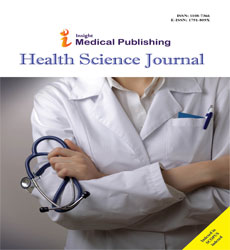Abstract
Determinants and Status of HIV Disclosure among Reproductive Age Women on Antiretroviral Therapy at Three Health Facilities in Jimma Town, Ethiopia, 2017
Background: Improving HIV disclosure status is significant for reducing HIV prevalent by promoting safer sexual practices, PMTCT, better treatment retention, partner testing and partners to make informed reproductive health choices. Objective: To explore HIV disclosure and associated factors among reproductive age women in health facilities of Jimma Town. Methods: Conducting a facility based cross-sectional design at three health facilities of Jimma town among women on ART from March 5-April 1, 2017. Finally, 338 women were selected by using systematic random sampling technique and interviewed with interviewer administered questionnaire. Epi data version 3.1 was used to enter data then transferred to SPSS to version 20 for analysis of explanatory variables. Results: Out of 337 women responded to the questionnaire, ever disclosure of women to someone was only 290 (86.1%). Still, 47 (13.9%) of them did not disclose. Having free discussion on safer sex [AOR=6.621, 95% CI (1.719-25.498)], being peer counselor [AOR=3.624, 95% CI (1.049-12.522)], being members anti-HIV association [AOR=3.171; 95% CI (1.183-8.501)] and being on ART [AOR=4.559, 95% CI (1.586-13.103)] were predictors of HIV disclosure. Conclusion: The overall magnitude of HIV disclosure was relatively good but nondisclosure is still high in this study. This will be a great fear on HIV transmission. This will continue as major public health burdens in the districts unless future interventions focuses on the factors that enhance disclosure through peer counselor, free discussion, members of anti-HIV association and on ART.
Author(s):
Getinet Kassahun, Zelalem Tenaw, Tefera Belachew and Makeda Sinaga
Abstract | Full-Text | PDF
Share this

Abstracted/Indexed in
- Google Scholar
- Genamics JournalSeek
- China National Knowledge Infrastructure (CNKI)
- CiteFactor
- CINAHL Complete
- Scimago
- Electronic Journals Library
- Directory of Research Journal Indexing (DRJI)
- EMCare
- WorldCat
- University Grants Commission
- Geneva Foundation for Medical Education and Research
- Secret Search Engine Labs
- Euro Pub
Open Access Journals
- Aquaculture & Veterinary Science
- Chemistry & Chemical Sciences
- Clinical Sciences
- Engineering
- General Science
- Genetics & Molecular Biology
- Health Care & Nursing
- Immunology & Microbiology
- Materials Science
- Mathematics & Physics
- Medical Sciences
- Neurology & Psychiatry
- Oncology & Cancer Science
- Pharmaceutical Sciences

